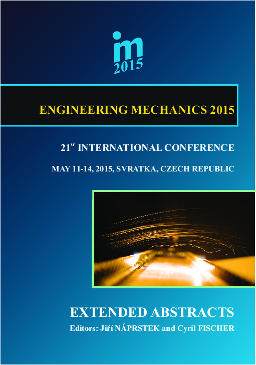Proceedings Vol. 21 (2015)

ENGINEERING MECHANICS 2015
May 11 – 14, 2015, Svratka, Czech Republic
Copyright © 2015 Institute of Theoretical and Applied Mechanics, Academy of Sciences of the Czech Republic, v.v.i., Prague
ISSN 1805-8248 (printed)
ISSN 1805-8256 (electronic)
list of papers scientific commitee
pages 174 - 175, full text
Direct conversion of heat into electrical energy is one of appropriate alternatives to generating electric current in conventional ways. Although thermal batteries are now usually used beyond the reach of energy distribution networks, however, prospectively, their wider use could be considered. In particular, more than 50 % of the energy used in homes, in car engines it is up to 70 %, is being lost as waste heat (for example – heated car exhausts, waste heat from refrigerators, computers, or solar panels can be used to power electrical circuits in those appliances). Historically, in manufacturing the first thermal batteries, only metals (tellurium, antimony, germanium, silver) were used, later then different alloys and semiconductors. Lead telluride is considered to be the most effective thermoelectric material, but it is not allowed because of its toxicity. Material researchers from the University of Osaka achieved promising results with the use of nickel and iron, but with the addition of thallium, i.e. also a toxic element. Researchers from General Motors very intensively examine skutterudites allowing heat absorption and passage of electric current, and conveniently with regard to relatively high temperature differences [1]. Further development of thermoelectrically efficient materials in the future should be oriented in particular to an environmental thrift and a relatively high efficiency, i.e. to material and structural resistance to high temperature differences (in the hundreds of degrees Celsius), which would allow to utilize significant waste heat from high-temperature processes (e.g. in steel production, etc.). To demonstrate a sample measurement of proposed performance characteristics, classical thermal batteries of ternary alloys have been chosen. Ternary alloys are characterised (compared to metals or semiconductors) by relatively convenient values of material coefficients. Using them, for example, for the temperature difference from 400 to 1 000 K, theoretically up to 30 % of material efficiency can be achieved. Practically, however, the temperature differences tend to be lower in the use of waste heat (as a result of heat dissipation into the surrounding environment and to the equipment itself). Even high temperature differences, however, do not guarantee a high level of efficiency of thermal batteries of ternary alloys, because under relatively high temperature differences, the thermal batteries are considerably amortisable.
back to list of papers
Text and facts may be copied and used freely, but credit should be given to these Proceedings.
All papers were reviewed by members of the scientific committee.

 Powered by
Imce 3.20 © 2023, Pavel Formánek, Institute of Thermomechanics AS CR, v.v.i. [generated: 0.0115s]
Powered by
Imce 3.20 © 2023, Pavel Formánek, Institute of Thermomechanics AS CR, v.v.i. [generated: 0.0115s]